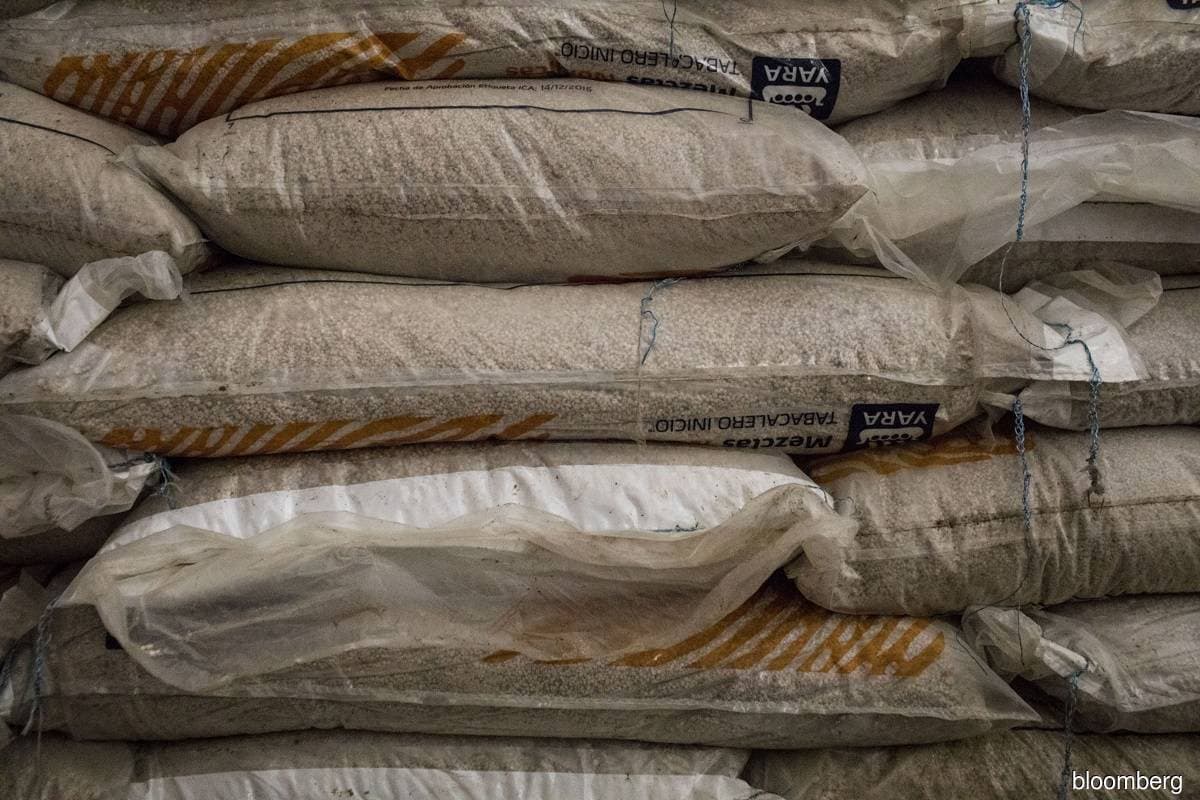
KUALA LUMPUR (Nov 10): The spike in fertiliser cost will increase the cost of production by about 15% to 20% for 2022, said UOB KayHian research on Wednesday.
The higher cost is expected to offset the earnings impact from high crude palm oil (CPO) prices, added the foreign research house that maintained an "underweight" call on the plantation sector.
UOB KayHian analysts Leow Huey Chuen and Jacquelyn Yow noted in a report that most fertiliser prices have soared since mid-2021 driven by strong demand, supply constraints and higher input costs.
"High prices are not the only issue, as it is also getting tougher to acquire supplies. Thus, the sector may again suffer from low fertiliser applications in 2022," they said.
According to them, the two main fertilisers for oil palm are nitrogen and phosphorus whereby the prices have increased more than 100% over the last six months driven by supply disruptions, strong demand and higher input costs.
Fertiliser cost is another major cost component after labour cost for oil palm producers, which is about 30% to 35% of ex-mill cost.
The analysts also noted that companies may continue to apply full fertiliser programmes despite the high price, but they may not be able to receive the ordered volume due to supply constraints and uncertainties over shipment arrangements.
"Malaysia and Indonesia are highly dependent on imported fertilisers but Indonesia is at a slight advantage as local ammonia production is sufficient to meet the domestic requirements," they said.
Based on their channel checks, the estimated fertiliser imports for 2021 are just about 60% to 65% of the usual annual requirements.
"As the logistics bottleneck is unlikely to be solved anytime soon, 2022 could see even lower fertiliser import volume," they said.
They also opined that smallholders may consider reducing fertiliser applications in order to maximise the return after suffering from low income for many years when CPO prices were low.
According to them, smallholders make up 45% and 35% of total oil palm planted areas in Indonesia and Malaysia, respectively.
"The impact of the reduction of fertilisers back in 2018 and 2019 is showing today as the yield recovery is slower and weaker than usual. As a result, production growth from Indonesia and Malaysia may not be able to deliver much growth for 2022," they said.
Despite the recent share price recovery, the analysts opined that the sector still underperformed the market in all three markets, ie Indonesia, Malaysia and Singapore.
"The recent share price recovery should be a one-off rerating for the potential high earnings growth for 2021. However, looking at smaller earnings growth for 2022 and an earnings contraction for 2023, we do not foresee any strong catalyst for the sector to outperform the market," they said, adding that they advocate selling into strength in the plantation sector.
For investors that must invest in this sector, UOB KayHian noted that it prefers companies in Malaysia with growth and good cash flow for potential good dividend, such as Kim Loong Resources Bhd (hold, target price [TP]: RM1.30), Hap Seng Plantations Holdings Bhd (hold, TP: RM2), Sarawak Oil Palms Bhd (sell, TP: RM3), Kuala Lumpur Kepong Bhd (hold, TP: RM20.50).